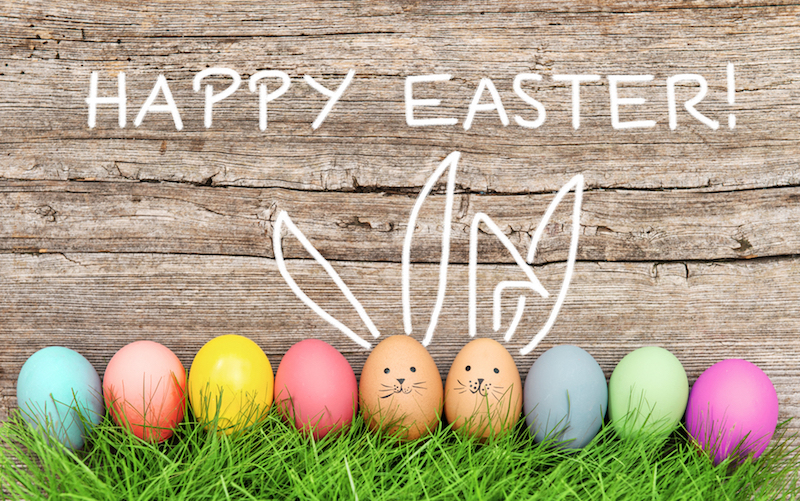GREECE:
Watch out for flying pottery on the Greek island of Corfu. On Easter Saturday at 11 a.m. sharp, the residents of Corfu throw clay pots from their balconies.
The tradition dates back to the 16th century, when people threw all of their useless and old belongings out of the window to get ready for the New Year – the breaking pots scare away evil spirits and mark a new beginning.
SWEDEN AND FINLAND:
In Sweden and Finland on the Thursday before Easter, children go door to door exchanging paintings and drawings for chocolate eggs and sweets wearing colourful headscarves, red cheeks and carrying bunches of willow twigs decorated with feathers.
The tradition comes from a legend that the Swedish witches went to Blakulla before Easter to party with the Devil. To stop the witches from coming back, Swedish people burn big bonfires on Easter Sunday. This is also celebrated in Finland as a Nordic tradition.
ITALY:
In Italy, ‘The Explosion of the Cart’ is a tradition that started over 300 years ago. The cart (Brindellone), stands over 9 metres tall and is pulled by a pair of white oxen from Via Il Prato to Piazza Duomo to sit between the Cathedral and Baptistery.
At 11am, the Archbishop of Florence stands at the altar and lights a dove shaped rocket to symbolise the holy spirit. This rocket is fired into the cart, causing the fireworks on top to explode. This tradition iscalled Scoppio del Carro and is followed by a parade in medieval costumes.
FRANCE:
In the town square of Haux, thousands of people gather on Easter Monday to celebrate Easter with a ginormous omelette. Dozens of cooks use over 5000 eggs, 50kg of onions and garlic, and 4kg of salt and pepper to make this omelette! Everyone at the event gets to join in and eat some for lunch. This tradition has been in France for over 30 years.
According to legend, Napoleon was travelling across southern France with his army when he first tasted an omelette prepared for him at an inn near Bessières. He enjoyed it so much that he had a giant one made for his troops the next day, and so began the tradition!
HUNGARY AND POLAND:
‘Sprinkling’ is a popular Hungarian Easter tradition that takes place on Easter Monday, which is also known as ‘Ducking Monday’. Boys playfully sprinkle perfume or perfumed water on girls’ heads and ask for a kiss. It is believed that water had a cleaning, healing and fertility-inducing effect.
In Poland, they celebrate ‘Wet Monday’ also known as Smigus-Dyngus which is the tradition that involves people throwing copious amounts of water at each other. The tradition goes back to when boys were allowed to drench girls in water and smack them with branches of pussy willow. This was meant as a way of showing their affection and usually resulted in marriage.
U.S.A.:
In the United States, the president holds the annual Easter Egg Roll on the White House lawn on Easter Monday. The tradition is believed to date back to 1878 and involved children rolling coloured boiled eggs with a large spoon.
NEW ZEALAND:
While the rest of the world hunts for Easter eggs hidden around the house, the good folk of Otago grab their guns for the annual ‘Great Easter Bunny Hunt’. The idea is to rid farmlands of ‘invasive pests’, with over 500 hunters vying for the coveted trophy and the $NZ 3,500 prize money. With over 10,000 rabbits meeting their maker each year, the Easter Bunny sensibly gives this corner of New Zealand a miss.
BERMUDA:
The people in Bermuda aim high for Easter: kite flying is everyone’s favorite pastime during the holidays. Bermudians make their own kites with wooden sticks, colorful paper, and intricate designs. All of this is topped off with a special tissue called “hummers” that then makes a buzzing sound, aka the sound of Bermudian Easter. Everyone gathers and lets their beautiful constructions fly – or goes to Horseshoe Bay Beach to attend the annual Kite Festival on Good Friday.

Comments
Post a Comment